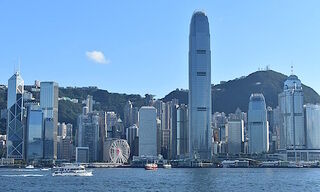Asia To Ride Out Coming Fed Wave - Nomura
The eventual Fed lift-off is undoubtedly one of the most anticipated monetary policy events. The previous taper announcement and implementation offered an instructive comparison: when former Fed Chairman Bernanke announced that the Fed could soon taper its purchasing programme in May 2013 there was a severe equity market market sell-off; but when the Fed actually began tapering in December 2013, the market impact was more muted.
Speaking on a conference call across Asia this week Nomura managing director chief economist and head of global markets research, Asia ex-Japan, Rob Subbaraman said he did not expect a fed rate rise until December. He is also of the opinion that when it does eventually come the majority of Asia's economies are well placed to absorb the impact.
Nomura is of the opinion that the Fed will move cautiously at first and of more importance than the actual timing of the official lift-off will be the rate at which the Fed’s monetary policy is calibrated to a normalised cycle.
Given that the policy rate is near zero, the unevenness of monetary policies and global growth (with the US at the vanguard of a sustainable recovery) and the duration of this US economic expansion being at a mature stage by historical standards, it would seem prudent from a risk-management perspective for the Fed to move gingerly at first.
Nomura does not expect a Fed lift-off to be overly disruptive to Asia ex Japan rates markets. Though they remain open to the view that investor sentiment will still likely be jittery heading into a lift-off, however at that time there could also be significant opportunities for investors.
Also underpinning any Fed move the continued Quantitative Easing by the ECB and the BOJ will provide some offset. The massive bond buying programmes of the ECB and BOJ are, with a lag, likely to spill over to Asia ex-Japan, thereby at least partly substituting for US monetary policy in supporting global liquidity.
Once sentiment has stabilised Nomura then expects differentiation to emerge between countries based on local dynamics. Ahead of any Fed lift-off the bank believes investors should look to use bouts of risk aversion to accumulate bonds/receivers in markets with strong fundamental stories. In their assessment both India and Korea look attractive.
In the equity space, Nomura said history suggests that the early phase of a hiking cycle seldom spells the end of the upside for risk assets. This is because in most cases, rate hikes usually come as a response to accelerating nominal growth – growth that ultimately underpins both general risk tolerance and, specifically, corporate earnings.
Therefore there is a bias toward current account-surplus markets (and aversion to current account-deficit markets), and a bias toward higher-beta, lower-yield markets and sectors.
Nomura’s key overweights by country include principally India, with smaller overweights in Korea (where KRW/JPY appreciation may comparatively limit scope for equity upside) and Singapore – their only overweight in ASEAN.
Overweight sectors include Tech, Industrials, Consumer Discretionary and Financials (ex-Property). Conversely underweights by country include Australia, Hong Kong and (broadly) EM ASEAN; and by sector high-yield Staples, Telcos and Utilities, as well as Property and upstream extractive sectors Energy and Materials.
On FX Nomura observed that if there are further Fed tightening-related jolts, the Malysian and Indonesian currencies would remain the most vulnerable. This is based on Malaysia’s narrowing current account surplus and Indonesia’s having already slipped into deficit, and the rising importance of foreign bond flows (relative to equity). The least vulnerable based on their analysis are the RMB and KRW, mainly on the strength of China and Korea’s current accounts.


























